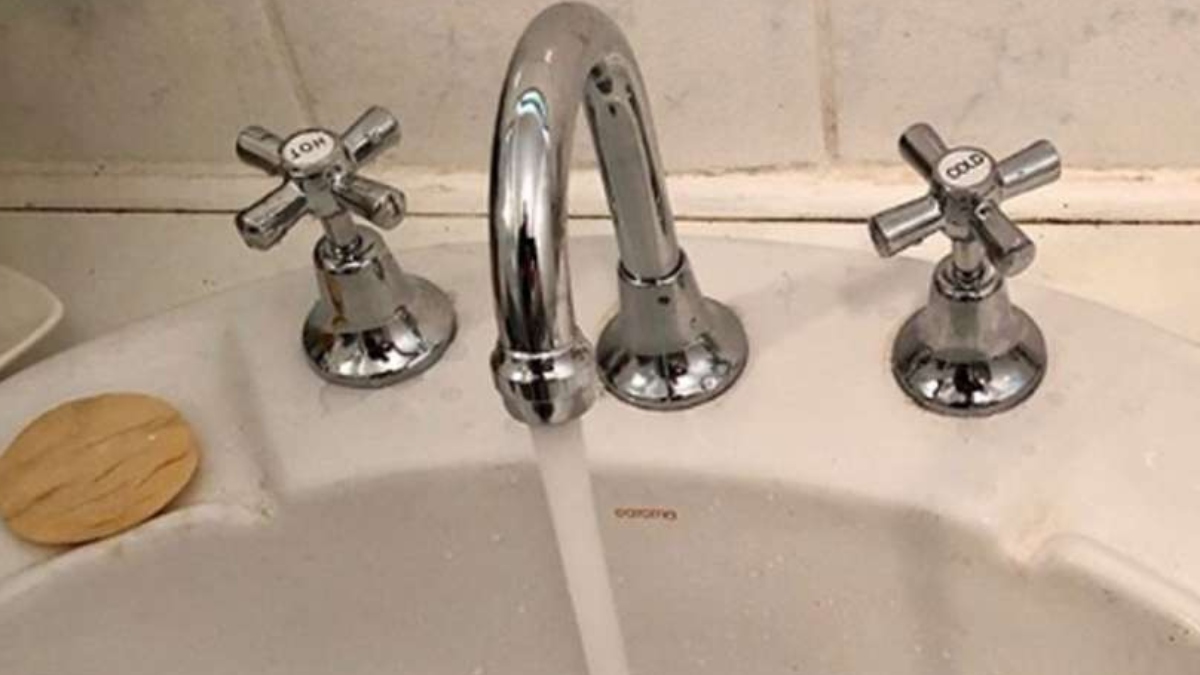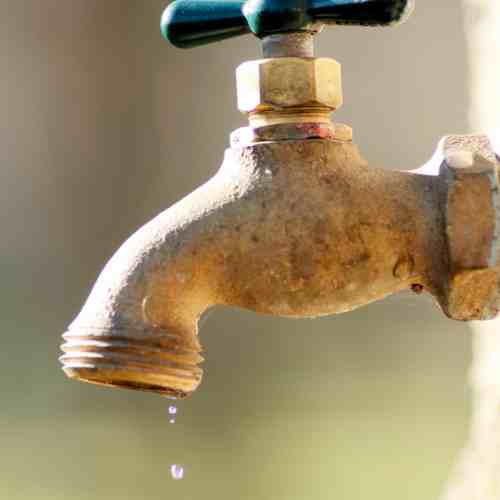We've discovered this great article involving How to Fix a Leaky Faucet below on the web and think it made sense to talk about it with you in this article.

Introduction
A dripping tap may appear like a minor annoyance, yet its repercussions extend much past the periodic drip. Comprehending the results of a leaky faucet is critical for both house owners and the atmosphere. In this short article, we'll discover the different impacts of this typical house concern and why resolving it promptly is important.
Root Causes Of Leaky Faucets
Leaking faucets can arise from a variety of variables, consisting of deterioration, high water stress, and corrosion. In time, the consistent use of faucets can cause worn-out seals and gaskets, creating leaks to create. Furthermore, extreme water stress can put pressure on plumbing components, resulting in leaks. Rust and corrosion can also damage faucet components, making them susceptible to leakage.
Water Wastefulness
One of the most considerable repercussions of a dripping tap is water waste. Even a little drip can add up to gallons of wasted water gradually. This not just drives up water costs but also adds to water scarcity and environmental deterioration. Resolving leaking faucets quickly is critical for conserving this precious source and minimizing its impact on the earth.
Financial Influence
In addition to wasting water, leaking taps can additionally have a significant financial influence. Increased water costs are a direct repercussion of water wastage, costing house owners thousands of bucks each year. In addition, the price of fixing water damage triggered by leaks can be considerable, particularly if left unattended for an extensive duration.
Ecological Effect
The ecological influence of dripping taps expands beyond water wastefulness. By conserving water, homeowners can contribute to broader efforts to minimize water scarcity and safeguard natural communities. Sustainable choices such as rainwater harvesting and water-efficient components can better minimize the ecological impact of household water usage.
Technical Solutions
Innovations in technology have caused the advancement of smart taps and water-saving tools that aid reduce water wastefulness. Smart taps make use of sensing units to discover activity and adjust water circulation appropriately, decreasing waste without sacrificing convenience. Water-saving gadgets such as aerators and low-flow showerheads are likewise reliable in saving water without jeopardizing performance.
International Viewpoints
While dripping faucets may seem like a local issue, they contribute to wider global obstacles such as water shortage and environment adjustment. In areas already facing water stress, every decline counts, making leak avoidance and fixing important. By embracing water-saving methods and investing in sustainable modern technologies, home owners can play their part in attending to these pressing worldwide concerns.
Regulatory Procedures
Government policies play a crucial function in minimizing the effect of leaky faucets and advertising water conservation. From developing codes that call for water-efficient fixtures to water-saving rewards and discounts, policymakers have a range of devices at their disposal. By applying and implementing these regulations, governments can guarantee that house owners focus on water conservation in their lives.
Area Influence
Attending to leaking taps requires cumulative efforts at the area level. By raising recognition regarding the relevance of water conservation and giving sources for leakage discovery and repair work, regional authorities can equip home owners to do something about it. Initiatives such as water-saving rebate programs and leak detection campaigns can incentivize behavior change and advertise liable water use.
Case Studies
Real-life instances of the effect of dripping faucets emphasize the relevance of positive maintenance and timely repair services. From water damage to increasing water bills, the effects of ignoring leakages can be extreme. By sharing these case studies, homeowners can better understand the value of dealing with leaky taps quickly.
Educational Campaigns
Educational projects play a crucial role in raising recognition concerning the results of leaky taps and promoting water conservation methods. With workshops, workshops, and on-line sources, home owners can find out exactly how to spot and repair leaks themselves. By equipping people with understanding and tools, instructional projects can promote a culture of accountable water usage within areas.
Health and wellness Issues
Dripping taps can create helpful settings for mold and mold development, positioning wellness dangers to occupants. The visibility of mold can intensify breathing problems and allergic reactions, specifically in prone people. In addition, water damages resulting from leakages can jeopardize the structural honesty of buildings and cause costly repair services.
DIY vs. Specialist Repair
When confronted with a leaky tap, homeowners frequently dispute whether to try repair work themselves or hire an expert plumber. While do it yourself fixings can save money, they might not constantly attend to the hidden problem properly. Professional plumbers have the proficiency and devices to diagnose and take care of leakages correctly, guaranteeing long-lasting options and peace of mind for home owners.
Preventive Measures
Protecting against dripping faucets needs normal upkeep and positive steps. Simple tasks such as replacing damaged washing machines and seals can prevent leaks from establishing. Furthermore, updating to high-grade fixtures and reducing water stress can help extend the lifespan of faucets and minimize the risk of leaks.
Final thought
Finally, the effects of a dripping faucet expand much beyond the occasional drip. From water wastage and raised water bills to wellness problems and ecological influence, the repercussions of neglecting leaks can be considerable. By resolving leaking taps promptly and embracing water-saving techniques, homeowners can alleviate these impacts and add to an extra sustainable future.
Causes and Consequences of a Leaky Faucet
Although it’s a relatively common issue, many people don’t know what causes a leaky faucet. Additionally, few homeowners are familiar with the consequences of leaky taps, causing them to ignore the problem. However, much of the damage caused by leaky faucets can be prevented by reacting swiftly.
In this article, we’ll provide a better understanding of leaky faucets by listing their causes and consequences.
What causes a leaky faucet?
Many internal pieces of the faucet responsible for turning the water on and off can break. Consequently, they can’t function correctly and will give rise to leaks. Here are a few common causes of leaks:
Loose washers
The washer opens and closes when turning the faucet on and off. This movement produces friction, causing wear and tear. Over time, the washer gets worn out and won’t fit closely to the valve seat, leading to a leak.
Worn out O-rings
O-rings seal gaps between the internal parts of the faucet. If they fail, water can seep through these gaps and result in a leaky faucet.
Poor seals
Many faucets have inlet seals that let water freely flow when turning the faucet on and stop when it is turned off. If there’s too much sediment or water pressure, the seals can suffer damage and cause the faucet to leak.
Corroded valve seat
The valve seat sits at the bottom of the faucet’s mechanism. It plays a part in turning the tap on and off, and it can corrode due to repeated usage. If so, water will be dripping around the handle area.
Worn out faucet cartridge
Single-handle faucets have a faucet cartridge that helps control the water flow. Due to normal wear and tear, the cartridge can start leaking.
What are the consequences of a leaky faucet?
High water bills – Dripping faucets can lead to much higher water bills due to the amount of water wasted. In particular, as much as 17 gallons of water can be wasted during a single day if a faucet has about one drip per second. Mold and rot – Mold can develop in any moist area, making the area around leaky faucets an ideal breeding ground. Also, any wooden elements affected by the leak can eventually rot. Overflows and drain clogs – If the leak persists for a while, it can cause a lot of stress on the plumbing system and lead to overflows and drain clogs. Water stains – Minerals accumulating in the sink due to a leaky faucet can be quite tricky to remove. In the worst-case scenario, you might need to buy a new sink. https://www.jimmyjoesplumbing.com/blog/causes-and-consequences-of-a-leaky-faucet

Do you like reading about The Environmental Impact of Leaky Faucets? Try to leave a short review down below. We will be pleased to find out your thoughts about this blog posting. Hoping to see you back again later on. Do you know about anybody else who is sincerely interested in the topic? Be sure share it. Thanks for taking the time to read it.